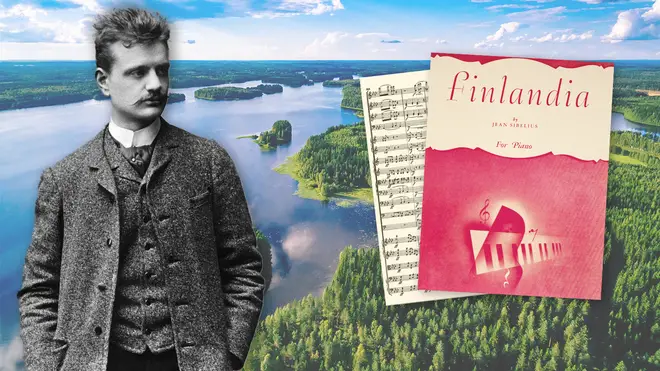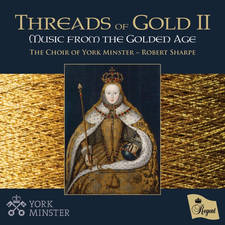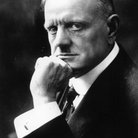The 10 best pieces of music by Sibelius
3 April 2024, 15:42

From symphonic Finnish nationalism to soaring violin concertos, here are the ten greatest pieces of music by Jean Sibelius.
Listen to this article
Born in southern Finland in 1865, Jean Sibelius’ music helped to define Finnish national identity for many in the 19th and 20th centuries, as the country struggled for independence against the Russian Empire.
So crucial was his contribution to Finnish art and culture that the nation honours the composer’s birthday each year on 8 December with a flag-flying celebration – a distinction reserved for the most valued figures in Finnish history alongside state occasions.
Sibelius’ music is so widely beloved that his anthemic tone poem Finlandia has even been suggested as a replacement for the country’s national anthem, Maamme, although the campaign is yet to be successful...
So without further ado, here are the ten finest pieces of music written by one of Finland’s greatest cultural exports.
Read more: The 20 best piano concertos of all time
-
Symphony No.5
Arguably his greatest musical triumph, Sibelius knew he was onto something the moment he put pen to paper for his Symphony No.5. He wrote in his diary: “It was as if God the Father was throwing pieces of mosaic from the edge of heaven and asking me to figure out what the pattern was.”
Other entries from his diary reveal the composer’s euphoric mood during the period, leading to four glorious movements all in major keys – unusual, for the musical form.
Sibelius also documented a sighting of 16 swans on 21 April 2015, which he described as “one of the great experiences of my life!”. The call of this bevy of whooper swans would inspire him to write the triumphant central theme to the symphony’s finale, blasted out by a chorus of French horns. Beautiful stuff.
Read more: The 15 greatest symphonies of all time

Jean Sibelius: Symphony No. 5
-
Finlandia
Sibelius’ ode to his homeland, Finlandia was written in 1899 as a protest piece, in the face of growing censorship throughout much of northern Europe during the final throes of the Russian Empire.
So overbearing was this censorship that the piece had to be performed under numerous alternative titles to avoid accusations of Finnish nationalism, including the fairly nondescript title of ‘Impromptu’ at its premiere.
Finlandia’s moody and stormy introduction gradually builds in intensity towards a triumphant fanfare, before being swept aside by a calm hymn-like section, which would later provide the melody to ‘Be Still My Soul’.
Read more: Sibelius’ ‘Finlandia’ played on four electric toothbrushes

Sibelius: Finlandia, Op. 26, No. 7
-
Symphony No.2
Reeling from the glowing response to Finlandia’s premiere, Sibelius soon turned his hand back to the manuscript page, writing: “My second symphony is a confession of the soul.”
To write it, he was sent by a friend, Axel Carpelan, to Italy: “a country where everything is beautiful, even the ugly.” Carpelan continued: “You have been sitting at home for quite a while, Mr Sibelius, it is high time for you to travel.”
Whatever was in that coastal Italian air inspired Sibelius to gift some of the most sensational and uplifting music to the world.

Sibelius: 2. Sinfonie ∙ hr-Sinfonieorchester ∙ Susanna Mälkki
-
Violin Concerto
Before he honed his craft as a composer, Sibelius was a promising young violinist. However, a hand tremor drew the curtains on his performing career before it ever really got started. His only concerto for the instrument could be considered a swan song for the violinist he might have been.
Its premiere was coloured by a series of unfortunate decisions. The work being finished at the eleventh hour, together with a last-minute soloist swap meant that its debut performance wasn’t the triumph it ought to have been.
Thankfully for us, Sibelius wasn’t completely deterred, returning to make some significant edits to his concerto and gifting the world one of the most exciting works for solo violin.
Read more: The 15 greatest violin concertos of all time, ranked

Sibelius : Concerto pour violon (Hilary Hahn)
-
Karelia Suite
Sibelius grew up during a tense period in northern European history, right on the doorstep of the Russian Empire, and his music is marked by a great admiration for his homeland.
Research into Finnish culture led him to Karelian rune singing, hailing from the Karelia region which is currently divided geographically between northwest Russia and southeastern Finland.
Sibelius developed a deep and fervent interest in the region throughout his late 20s and early 30s, so when he was asked to write a piece about it in 1893, he was undoubtedly delighted. Finnish pride shines through brass fanfares and shimmering strings, in some of Sibelius’ catchiest melodies.

Sibelius Karelia suite Op 11 Paavo Järvi Münchner Philharmoniker
-
Symphony No.7
Rather than the usual four, Sibelius’ seventh symphony consists of just one movement. In fact, it took him some time to acknowledge the work for what it was: he titled it ‘Fantasia sinfonica’ for its premiere in 1924, only upgrading it to symphony status when it was published the following year.
It took Sibelius a decade to complete this final symphony. Sketches in his composition book from around 1914 show melodic fragments beginning to appear, with a number of drafts dated 1923.
The single-movement masterpiece was finally completed in 1924, amid marital difficulties and worsening alcoholism, a compelling adventure in harmony, tempo, and orchestration.
Read more: What is a symphony? We explain…

Sibelius, Symphonie Nr 7 C Dur op 105 Leonard Bernstein, Wiener Philharmoniker
-
Symphony No.1
For his first symphony, Sibelius looked to several of the great composers that came before him for inspiration. Drawing from Tchaikovsky’s ‘Pathétique’ Symphony, extracts of Sibelius’ first can also be found in his notes from 1898, annotated: “Berlioz?”
More than any other, however, one voice erupts from the great symphonic work clamouring over all others: Jean Sibelius. His first foray into the symphony format was a glowing success, with one critic writing at its premiere: “The greatest creation that has originated from Sibelius’ pen.”
His own worst critic, Sibelius still wasn’t happy, and made several further revisions to the symphony before embarking on a European tour. It was this work that secured him his first taste of international renown, a Hamburg reviewer describing it as “a work full of unrestrained strength, full of passionate vivacity and astonishing audacity.”
We couldn’t agree more.

Jean Sibelius : Symphonie n°1 en mi mineur op 39
-
Andante Festivo
More than any other piece he wrote, ‘Andante Festivo’ was a constant throughout Sibelius’ own life.
Originally commissioned to write a festive cantata for the 25th anniversary celebration of the plywood mills in Säynätsalo, southern Finland, Sibelius instead provided a short piece for string quartet.
Seven years later, in 1929, Sibelius revisited the work for the wedding of his niece, Riitta. And 10 years after that, in the early days of radio broadcasting, Sibelius returned to it once more.
Put out by the distorted quality of his music over loudspeakers, he re-orchestrated the piece for string orchestra and timpani for broadcast purposes. He came out of retirement to conduct the work himself, leaving us the only existing recording of Sibelius himself on the podium...
Read more: Hear the ‘first’ recording of classical music – an astonishing 1888 performance of a Handel oratorio

Jean Sibelius conducts "Andante Festivo" in 1939
-
Lemminkäinen Suite
Sibelius’ Lemminkäinen Suite began life as an opera, The Building of the Boat, based on Finnish folk mythology taken from the epic anthology, ‘Kalevala’.
The opera wasn’t to be, but Sibelius wasn’t about to let his hard work go to waste. Instead, he transformed a part of his work into a tone poem, called ‘The Swan of Tuonela’.
To this, he added a further three pieces, taking inspiration from another story in the ‘Kalevala’, to create the Lemminkäinen Suite, a 45-minute expedition into Finland’s musical mythology.

Sibelius: Lemminkäinen ∙ hr-Sinfonieorchester ∙ Jukka-Pekka Saraste
-
Valse Triste
Sibelius’ Valse Triste was first imagined as incidental music for a play written by his brother-in-law. It accompanied a darkly disturbing scene, in which a young boy sleeps beside his dying mother, who becomes animated in a rapid phantom waltz, before succumbing to her illness.
His score to the play wasn’t a particularly lucrative one, so Sibelius sold the rights to a publisher for a very modest amount of money. Little did he know, it was soon to become one of his most famous works, in various musical arrangements, and could have solved all his financial struggles, had he held onto his rights...

Jean Sibelius - Valse triste / Paavo Järvi / Estonian Festival Orchestra









